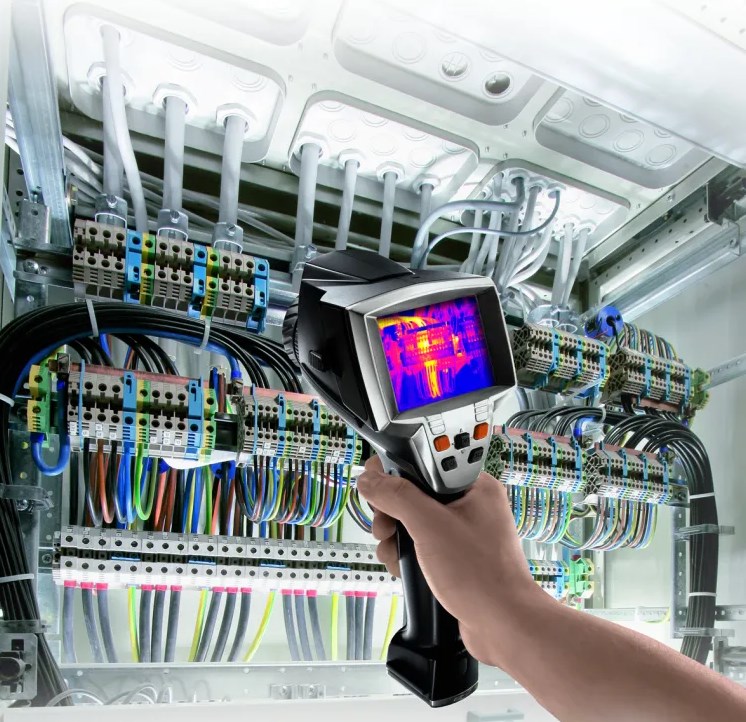The use of thermal imaging to carry out non-contact mechanical and electrical inspections is called thermography. Thermography involves employing infrared (IR) or thermal cameras to capture and record variations in the temperature of mechanical and electrical equipment.
Thermal imaging is used in various industries, including firefighting, auto manufacturing, wildlife studies, skin temperature screening, industrial inspections, and scientific research.
This post, however, will focus on the use of thermal imaging for electrical inspections. We will also look at what thermal imaging can detect during electrical inspections. So if you’re looking for industrial thermal imaging services, we’ve got you covered, we are industrial electricians in the Brisbane area.
Without further ado, let’s dive into it.
What is the Benefit of Using Thermal Imaging For Electrical Inspections?
How a thermal camera works:
- A thermal camera can detect and convert heat into a visual image
- The camera comprises a lens, thermal sensor, processing electronics, and housing
- The lens focuses infrared energy onto a thermal sensor
Thermal cameras have low resolution and fewer pixels as the thermal detectors sense energy with larger wavelengths than visible light. This means that the sensor elements need to be significantly larger.
The sensors detect different temperatures and display them in various colours. Usually, the hotter spots with brighter colours and cooler spots with darker colours.
The use of thermal imaging to conduct electrical inspections has become increasingly common, as most electrical components will either be hotter or cooler than they are meant to be if they malfunction.
As such, you can use thermal cameras to identify problem areas more easily. For example, an electrical component or connection that is about to malfunction will generate more heat than it should. This increase in temperature will be evident when viewed with thermal imaging.
Thermal Imaging Is Cost-effective
Thermal imaging is also cost-effective; all you need is to hire a trained professional with a thermal camera.
The camera produces an image of the different temperatures emanating from the equipment. After the inspection, the captured images can be uploaded to a computer or other smart device for analysis and reporting. Our professional commercial electricians will also write up a report, give any relevant advice, or proceed with any necessary repairs.
What Can Thermal Imaging Detect?
You can use thermal imaging to scan electrical cabinets, breaker panels, fuses, bolted connections, and switchgear. Thermal imaging can detect heat even in dark, foggy or smoky areas and is useful for the following electrical procedures:
- Installation of electrical wiring and equipment
- Quickly scanning large areas for hot spots or cold spots
- Troubleshooting errors in electrical connections
- Verifying the adequacy of equipment installation
- Ensuring compliance with standard electrical codes and safety measures
- Finding broken or undersized wires or defective insulation
The increase in heat levels in an electrical circuit could be due to various factors, including loose connections. Therefore, measuring the heat patterns in electrical components will help locate faults and ascertain the extent of malfunctions.
In addition, the efficiency of thermal imaging depends on the emissivity level of the electrical component. Some objects have higher emissivity levels than others. This affects the thermal imager accuracy when detecting the object’s surface temperature.
Objects with higher emissivity levels emit thermal energy well. As a result, the images captured of such objects are usually more precise and more reflective than that of objects with low emissivity levels. Thus, the higher the emissivity level, the better.
Electrical Components that Are Compatible With Thermal Imaging
Damaged Fuses
With thermal imaging, you can identify damaged fuses, as damaged fuses often overheat. Conversely, however, a blown fuse will show up as cold.
Electrical Imbalance
You can assess the heat from panels and connection points with thermal imaging. You can then follow the circuit and examine the associated branches and loads wherever you find higher temperatures.
You can discover an imbalance by comparing the images from each electrical phase side by side and checking for temperature differences. If a circuit is cooler than it should be, it may signify a malfunction in a component. The heavily loaded phases will appear as hot spots.
Connections and Wiring
Thermal imaging will highlight connections that have higher temperatures. A higher temperature in a connection could signify a loose, overtightened, or corroded connection with increased resistance.
When a particular spot is hot, the warmest part is usually where there is resistance. A cold component could also signify that the current has been diverted away from the high-resistance connection.
Motor Control Centres
Thermal imaging will highlight a heavily loaded motor control centre. When evaluating the thermal scan, look at the normal operating conditions and compare them with your findings.
If you find a motor control centre under load, open up each compartment and compare the relative temperatures of all the key components. This will help you create your report.
Transformers
You can use a thermal imager to examine transformers. For example, you can check the external bushing connections, cooling tubes, cooling fans and pumps, and the surfaces of critical transformers.
The cooling tubes are generally warm. Thus any tube that appears cool signifies a restriction of oil flow.
It is crucial to detect a temperature rise early. This is because a higher temperature will reduce the lifestyle of the transformer.
When it comes to dry transformers, it is slightly more difficult to detect problems with thermal imaging. This is because dry transformers have high temperatures as standard.
Industrial Electricians Brisbane
With thermal imaging, you can improve your work’s efficiency, accuracy, and safety on electrical systems. In addition, it provides a realistic solution for everyday electrical maintenance.
If you want to optimally maintain your electrical system and have a safer home and electrical efficiency, you should carry out regular thermal imaging. If your business needs thermal imaging services from a commercial electrician in the Brisbane area, Industrial Power & Automation has you covered.
At Industrial Power & Automation, we have different categories of thermal imagers which will help you inspect your electrical systems and detect possible malfunctions.
Don’t delay. Contact us now.









